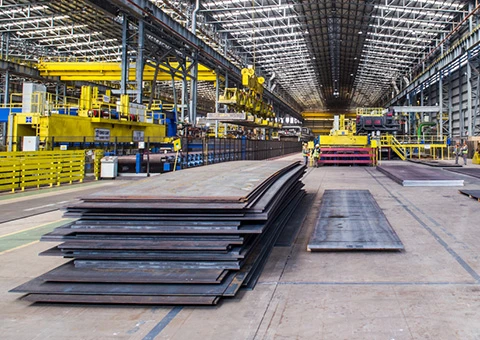Crane and Gantry System for Efficient Material Handling and Transportation Solutions
Understanding Crane Gantry Systems A Comprehensive Overview
In the modern landscape of industrial operations, efficiency and precision play critical roles in ensuring effective material handling. One of the most effective solutions for managing heavy loads and improving workflow is the crane gantry system. This versatile equipment is widely used in various sectors, including shipping, construction, and manufacturing. In this article, we will explore the fundamentals of crane gantry systems, their types, applications, and key advantages.
What is a Crane Gantry System?
A crane gantry system is a type of overhead lifting device that consists of a beam supported by vertical legs. This structure is designed to move loads horizontally along the beam while being elevated above the ground. Gantry cranes can be classified as either full gantry cranes, where the whole structure moves along rails, or semi-gantry cranes, where only one side is supported by rails while the other side is fixed. The design allows for greater flexibility in lifting and transporting materials in confined spaces.
Key Components of a Gantry Crane
1. Main Beam This horizontal component is the primary support structure for the loads being handled. It can vary in length, depending on the specific application requirements.
2. Legs The vertical supports that elevate the main beam above the ground. They can be fixed or adjustable to accommodate different load heights.
3. Wheels Mounted on the legs, wheels facilitate easy movement along a fixed track or rail system. This feature enables the crane to move loads to designated areas within the workspace.
4. Hoist The hoist mechanism attached to the main beam is responsible for lifting and lowering the loads. Hoists can be powered electrically, pneumatically, or hydraulically, offering various options based on the operational needs.
5. Controls Operator interfaces, which can include remote control systems, allow for precise operation of the crane, enhancing safety and efficiency.
Types of Gantry Cranes
1. Full Gantry Crane Supported on both ends by legs, this type can traverse a runway entirely. It is ideal for applications that require heavy lifting and extensive horizontal movement, such as shipyards and warehouses.
2. Semi-Gantry Crane This has one side on a rail and the other on the ground. Semi-gantry cranes are often used in environments with limited space, providing flexibility while retaining the ability to lift considerable weights.
3. Portable Gantry Crane Designed for mobility, these cranes are lightweight and can be easily relocated to different job sites. They are typically used for smaller, less heavy applications.
crane gantry system

4. Adjustable Gantry Crane This type allows operators to modify the height and span of the crane to suit various tasks, making it versatile for handling loads of different sizes.
Applications of Crane Gantry Systems
Gantry cranes are suitable for a wide range of applications across various industries, including
- Construction Used for lifting and moving materials such as steel girders and heavy equipment. - Shipbuilding Facilitates loading and unloading of heavy components within shipyards. - Manufacturing Assists in handling large parts and assemblies during the production process. - Warehousing Enables efficient storage and retrieval of goods, particularly in environments with limited vertical clearance.
Advantages of Crane Gantry Systems
The adoption of crane gantry systems offers numerous benefits
1. Space Efficiency Their design optimizes vertical space, making them suitable for areas with limited headroom.
2. Flexibility Gantry cranes can be easily relocated and adjusted to meet specific lifting needs, enhancing operational versatility.
3. High Load Capacity They are capable of lifting substantial weights, providing solutions for heavy-duty lifting tasks.
4. Improved Safety Modern gantry cranes incorporate advanced safety features that protect both operators and loads during movement.
5. Cost-Effectiveness Investing in a gantry crane can lead to lower operational costs by increasing productivity and reducing manual labor.
Conclusion
In conclusion, crane gantry systems represent a vital component of modern industrial operations. Their diverse applications, flexibility, and efficiency contribute significantly to optimizing material handling processes. As technology continues to advance, we can expect to see further innovations in crane gantry systems, enhancing their capabilities and expanding their use across different sectors. Understanding their design and functionality not only helps in selecting the right type for specific needs but also in maximizing their potential benefits in the workplace.
-
Unlock Seamless Relocation with Our Heavy Equipment Moving ExpertiseNewsJun.06,2025
-
Unleash Unrivaled Flexibility with Our Adjustable Gantry CraneNewsJun.06,2025
-
Unleash Heavy-Duty Efficiency with Our Industrial Gantry Crane SolutionsNewsJun.06,2025
-
Revolutionize Steel Handling with Our Magnetic Lifter RangeNewsJun.06,2025
-
Master Equipment Mobility with Premium Machinery Mover SolutionsNewsJun.06,2025
-
Elevate Your Material Handling with Magnetic Lifter TechnologyNewsJun.06,2025
-
YS Permanent Lifting Magnets: The Smarter Way to Handle SteelNewsMay.22,2025
